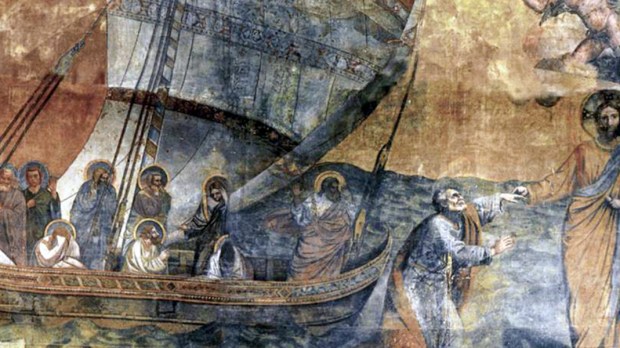In the seven-plus years since Cardinal Jorge Mario Bergoglio has served as Pope Frances, his favorite image of the Church as a “field hospital” has been used over and over.
“I see clearly that the thing the Church needs most today is the ability to heal wounds and to warm the hearts of the faithful,” the pope said in a September 2013 interview. “It needs nearness, proximity. I see the Church as a field hospital after battle.”
Using an image to explain what the Church is and what its functions are is not new, however. Throughout history, the Church has been referred to with various metaphors, such as the “Barque of Peter,” a sheepfold, a vineyard, and a building.
Joby Provido, writing at Catholic365.com, outlines the various ways metaphors are used and where these images came from.
Church as Boat (or Barque)
This image harks back to the Old Testament. A flood came upon the earth, and those who embarked on Noah’s Ark were saved. At the end of the ordeal, a dove appeared to herald new life.
The Church is the new ark which saves mankind from the floods of sin and death. The Holy Spirit is the dove that brings new life.
In the New Testament, many episodes in Christ’s life are linked with boats. Jesus promised Peter, who spent his life on boats, that he would no longer catch fish but men. Though a storm raged on the Sea of Galilee, the boat was not imperiled because Christ was in it. Christ would sometimes preach from the boat of Peter.
This imagery lent itself to ideas of how churches should be built. It’s significant that the central aisle of a church is called the nave, because the word comes from the Latin navis, which mean ship. And the vaulted ceilings of gothic churches are shaped as a ship’s keel.
It wasn’t too far-fetched that Orson Welles preached from a ship-shaped pulpit in the 1956 film version of Moby Dick.
Because Peter was the Prince of the Apostles and because the Bishop of Rome is the successor of St. Peter, the Church is sometimes called the Barque of Peter.
Sheepfold
“I am the gate. Whoever enters through me will be saved, and will come in and go out and find pasture,” Jesus says, in a passage from the 10th chapter of St. John’s Gospel. He said this after comparing himself to a shepherd and his followers as sheep.
“Shepherds would usually sleep in the opening of the corral and act as a gate,” Provido explains. “Wolves are afraid to go near, while the sheep inside don’t venture out knowing the Shepherd protects them. … It is within the Church we find safety from error.”
The image of a shepherd carrying sheep across his shoulders comes from the fact that if a particularly stubborn sheep consistently ventures too far away, a shepherd might give him a small injury to keep him from wandering outside the field of protection, Provido says: “He carries that particular sheep around his neck until the leg heals. By that time the sheep looks for the scent of the shepherd and won’t leave by his side. Maybe when we complain about our miseries, Christ is breaking our leg to bring us closer to him.”
Bishops’ vestments and liturgical items reflect the symbolism of the sheep and shepherd. A cloth woven from white lamb’s wool and known as a pallium is worn around a bishop’s neck — as if he were carrying a lamb. A bishop’s staff evokes images of a shepherd’s staff.
Building
St. Peter wrote about the Church: “Like living stones, let yourselves be built into a spiritual house to be a holy priesthood to offer spiritual sacrifices acceptable to God through Jesus Christ.”
The Church is a building of God, not of stone but of the people of God who are “living stone,” Provido explains. He wrote that first-century Jews would not have missed the importance of Christ giving Simon the name “Peter” and saying, “Upon this rock I will build my Church.”
“The great Temple in Jerusalem was built upon a rock,” he points out. “It makes clear what Christ says about destroying the Temple, and rebuilding it with his mystical body — the new Temple, the building of God. And just like the old Temple, it is in this living building of God where we continue the sacrifice that is acceptable to God when we offer him Christ in every Mass.”
The Bride of Christ
In the account of creation in Genesis, God formed Eve from a rib of Adam. Church Fathers saw that as a symbol of the Church being born from the wound on the side of Christ as he hung on the cross. As Eve was the bride of Adam, the Church is the bride of the new Adam, Jesus Christ.
“It is no coincidence that God would continually reveal himself as a bridegroom in the Old Testament, and why Christ would refer to him as a bridegroom in the New Testament,” Provido writes.
The rest of Provido’s exposition can be read here.

